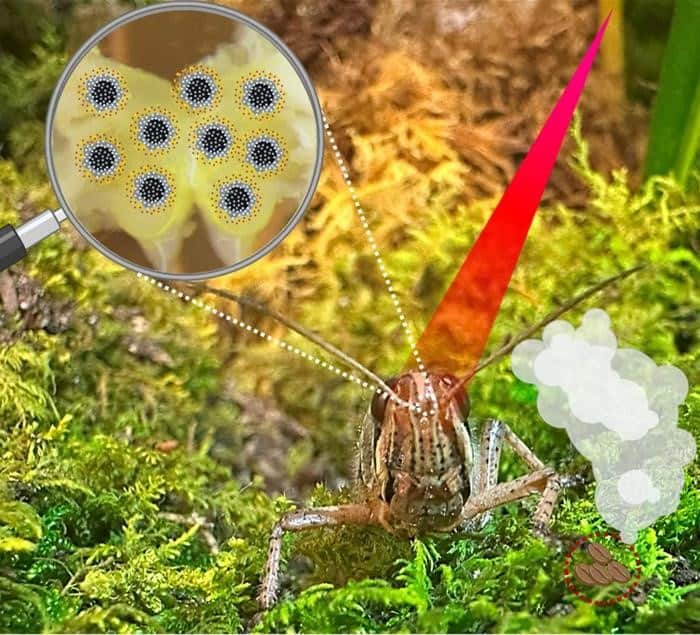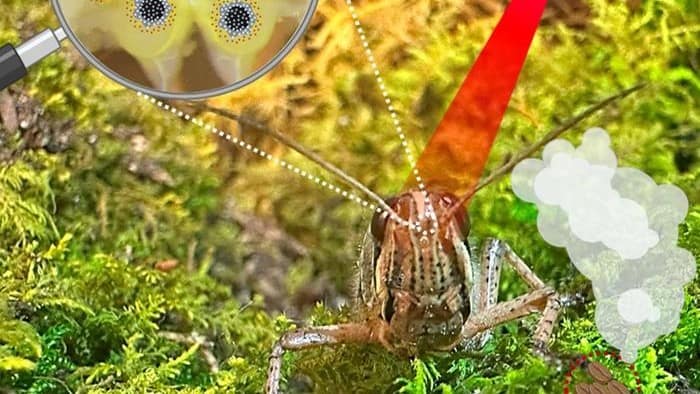
Using specially engineered nanoparticles, a team of US researchers has artificially enhanced the sense of smell in locusts. Led by Srikanth Singamaneni and Barani Raman at Washington University in St Louis, the researchers’ approach could lead to a new type of biological chemical sensors.
Many different animals have evolved a sense of smell that vastly outperforms our own. Even today, the latest designs of chemical sensor have yet to catch up with the sensitivity of biological olfactory systems, as well as their ability to distinguish between subtly different substances.
Recently, researchers have attempted to harness these abilities in biological chemical sensors. Initially, Singamaneni’s team planned to do this with locusts, which carry their olfactory apparatus in their antennae.
Biology does the hard work
“We let the biology do the harder job of converting information about vaporous chemicals into an electrical neural signal,” explains Raman. “These signals are detected in the insect antennae and are transmitted to the brain. We can place electrodes in the brain, measure the locusts’ neural response to odours, and use them as fingerprints to distinguish between chemicals.”
This approach quickly ran into difficulties, however. Without harming the insects, Singamaneni’s team found they were strictly limited both in the number of electrodes they could use, and in the regions where they could be placed. Ultimately, this meant that the neural signals they detected were far too weak for the system to act as a reliable chemical sensor.
To overcome this challenge, the researchers have explored how the locusts’ neural signals could be enhanced with the help of photothermal nanoparticles, which are extremely efficient at converting light into heat. “Heat affects diffusion – imagine adding cold milk to hot coffee,” Raman says. “The idea is to use the heat generated by nanostructures to locally heat and enhance neural activity.”
In this case, the team examined how locally applied heat could be used to control the release of neurotransmitters. These are the molecules responsible for conveying electrical signals between neurons in the brain.
Melting wax
To achieve this, they started by encasing photothermal polydopamine nanoparticles in a porous silica coating. They then mixed the structure with a dye containing 1-tetradecanol. The latter is a waxy solid at room temperature, but melts at just 38 °C. Finally, they loaded the nanostructures with a neurotransmitter “cargo” and injected them into locust brains.
To test their approach, the team placed random arrays of electrodes on the locusts’ heads, and monitored their neural signals when they exposed them to different odours. When they detected neural signals, the team then fired a near-infrared laser in the place where the signals appeared.
The photothermal nanoparticles absorbed the near-infrared light and this heated the surrounding 1-tetradecanol above its melting point – releasing the structure’s neurotransmitter cargo into its immediate surroundings.
Enhanced sense of smell
With the temporary abundance of neurotransmitters, the locusts’ neural signals were temporarily amplified by a factor of 10. This improved the insects’ sense of smell and also boosted the locusts’ neural activity to levels that could be measured far more accurately by the team’s electrode arrays. This was the case even when they nanoparticles were not placed in optimal positions.
“Our study presents a generic strategy to reversibly enhance neural signals at the brain site where we place the electrodes,” Raman explains. When signal amplification was no longer required, the excess neurotransmitter molecules were simply broken down by natural enzymes. In the long term, the nanostructures will biodegrade, leaving the locusts unharmed.
The researchers are confident that their approach could be a promising step towards a new generation of biological chemical sensors.
“It would change an existing passive approach – where information is simply read – into an active one, where the capabilities of neural circuits as a basis for information processing are fully used,” Raman explains. If achieved, this would both boost the sensitivity of chemical sensors, and improve their ability to differentiate between different chemicals.
The research is described in Nature Nanotechnology.


